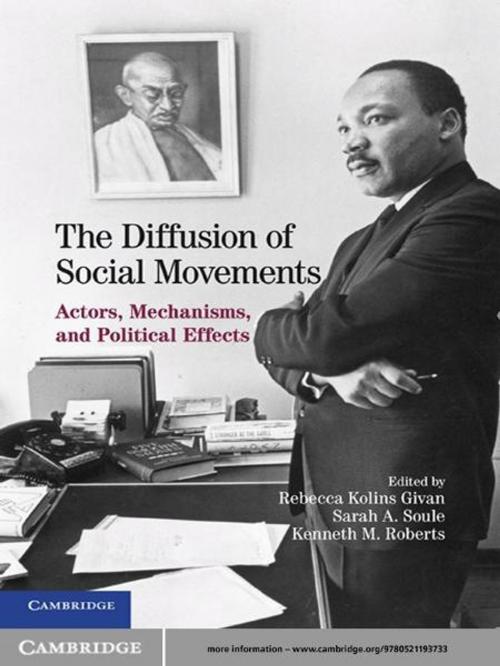The Diffusion of Social Movements
Actors, Mechanisms, and Political Effects
Nonfiction, Social & Cultural Studies, Political Science, International, Foreign Legal Systems, Social Science| Author: | ISBN: | 9780511848629 | |
| Publisher: | Cambridge University Press | Publication: | July 19, 2010 |
| Imprint: | Cambridge University Press | Language: | English |
| Author: | |
| ISBN: | 9780511848629 |
| Publisher: | Cambridge University Press |
| Publication: | July 19, 2010 |
| Imprint: | Cambridge University Press |
| Language: | English |
It is widely recognized that social movements may spread - or 'diffuse' - from one site to another. Such diffusion, however, is a complex and multidimensional process that involves different actors, networks, and mechanisms. This complexity has spawned a large body of literature on different aspects of the diffusion process, yet a comprehensive framework remains an elusive target. This book is a response to that need, and its framework focuses on three basic analytical questions. First, what is being diffused? Second, how does diffusion occur? Finally, what is the impact of diffusion on organizational development and shifts in the scale of contentious politics? This volume suggests that diffusion is not a simple matter of political contagion or imitation; rather, it is a creative and strategic process marked by political learning, adaptation, and innovation.
It is widely recognized that social movements may spread - or 'diffuse' - from one site to another. Such diffusion, however, is a complex and multidimensional process that involves different actors, networks, and mechanisms. This complexity has spawned a large body of literature on different aspects of the diffusion process, yet a comprehensive framework remains an elusive target. This book is a response to that need, and its framework focuses on three basic analytical questions. First, what is being diffused? Second, how does diffusion occur? Finally, what is the impact of diffusion on organizational development and shifts in the scale of contentious politics? This volume suggests that diffusion is not a simple matter of political contagion or imitation; rather, it is a creative and strategic process marked by political learning, adaptation, and innovation.















